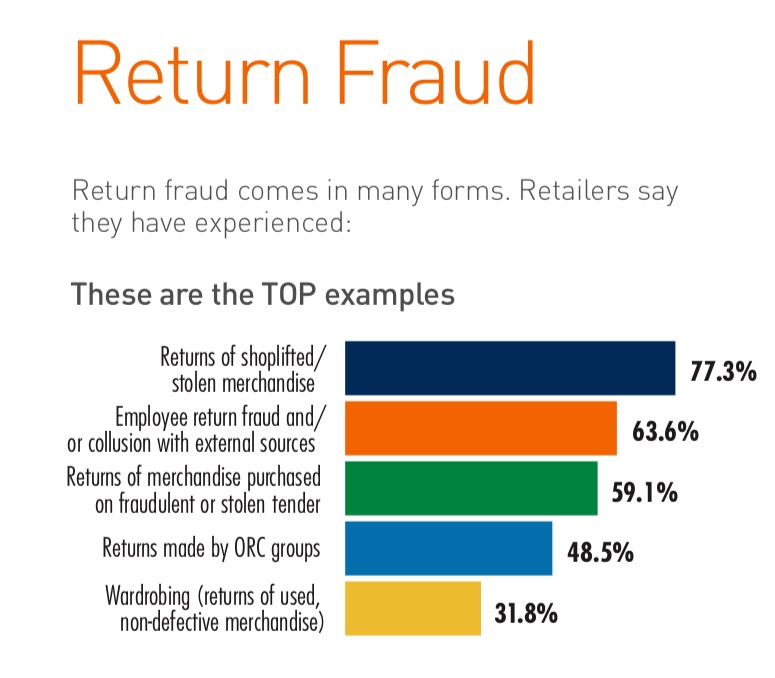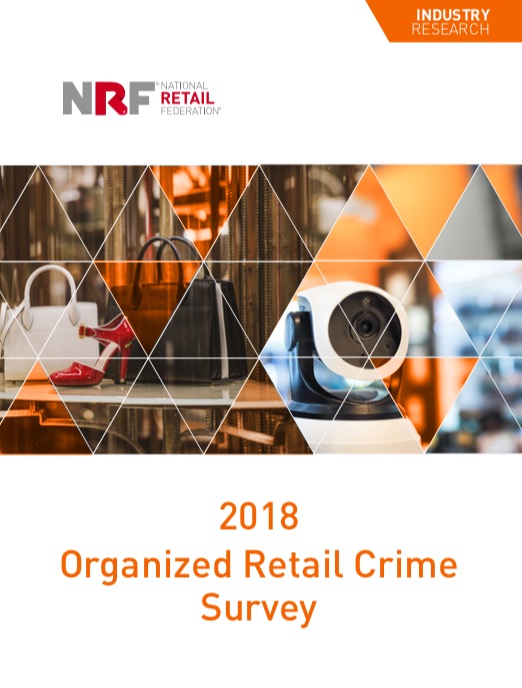
20 Nov, 2018
Organized Retail Crime Losses Reach All-Time High – Annual Study
WASHINGTON–(BUSINESS WIRE)– November 19, 2018 – Organized retail crime is continuing to grow, with nearly three-quarters of retailers surveyed reporting an increase in the past year, according to the 14th annual ORC study released today by the National Retail Federation.
“Retailers continue to deal with increasing challenges and complications surrounding organized retail crime,” NRF Vice President of Loss Prevention Bob Moraca said. “These criminals find new ways to expand their networks and manipulate the retail supply chain every day. The retail industry is fighting this battle by upgrading technology, improving relationships with local law enforcement and taking steps such as tightening return policies, but it is a never-ending battle.”


The report found that 92 percent of companies surveyed had been a victim of ORC in the past year and that 71 percent said ORC incidents were increasing. Losses averaged $777,877 per $1 billion in sales, up 7 percent from last year’s previous record of $726,351.
Retailers attributed the increase to the easy online sale of stolen goods, gift card fraud, shortage of staff in stores and demand for certain brand name items or specific products. In addition, a number of states have increased the threshold for a theft to be considered a felony, meaning criminals can steal a larger quantity of goods while keeping the crime a misdemeanor and avoiding the risk of higher penalties that come with the commission of a felony.
ORC typically targets items that can be easily stolen, and quickly resold, and top items range from low-cost products like laundry detergent, razors, deodorant, infant formula and blue jeans to high-end goods like designer clothing and handbags, expensive liquor and cellphones. Stolen goods are recovered anywhere from flea markets and pawnshops to online, with gift cards often ending up on online gift card exchanges. While online fencing has increased over the years, retailers say 60 percent of recovered merchandise, on average, is found at physical locations.
While at least 34 states have ORC laws, 73 percent of retailers surveyed support the creation of a federal ORC law, noting that ORC gangs often operate across state lines.
Some ORC activity happens before merchandise ever reaches stores, with 29 percent of retailers saying they had been the victim of cargo theft that occurred along their supply chains. The number was down from 40 percent last year and 44 percent the year before.
The country’s largest cities are the most frequent targets of ORC. The top locations are 1) New York City; 2) Los Angeles; 3) Miami; 4) Chicago and Houston, tied; 5) San Francisco/Oakland; 6) Atlanta; 7) Baltimore; 8) Orlando; 9) northern New Jersey, Washington, D.C., Philadelphia, and Arlington/Dallas/Fort Worth, tied; and 10) Fort Lauderdale and Seattle, tied.
Return Fraud Continues to Post a Threat to Retailers
Return fraud continues to pose a serious threat to the retail industry. Retailers estimated that an average 11 percent of their annual sales will be returned this year, and that 8 percent of those returns are likely to be fraudulent. An estimated 12 percent of returns will not include a receipt, and 21 percent of those are expected to be fraudulent. In addition, 38 percent reported in an increase in online purchases returned to a bricks-and-mortar location, and 29 percent cited an increase of those returns being fraudulent.
During the holiday season, retailers expect 11 percent of sales to be returned, on average, down from 13 percent last year, and that 10 percent of the returns will be fraudulent, down from 11 percent last year.
The survey of 66 loss prevention professionals representing department store, big-box, discount, drug, grocery, specialty retail and other industry sectors was conducted September 16 through October 5.
About NRF
The National Retail Federation is the world’s largest retail trade association. Based in Washington, D.C., NRF represents discount and department stores, home goods and specialty stores, Main Street merchants, grocers, wholesalers, chain restaurants and internet retailers from the United States and more than 45 countries. Retail is the nation’s largest private-sector employer, supporting one in four U.S. jobs — 42 million working Americans. Contributing $2.6 trillion to annual GDP, retail is a daily barometer for the nation’s economy.



Liked this article? Share it!